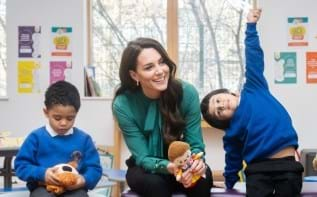What are the challenges that children and young people in Place2Be schools face?
What are the challenges that children and young people in Place2Be schools face?
- Place2Be is supporting children and young people with key risk factors for poor mental health and poor long-term outcomes. Many have multiple risk factors.
- Place2Be services reach schools and pupils with higher levels of economic deprivation than the national average.
- Place2Be services are reaching children and young people with Special Educational Needs (SEN), with a greater proportion of SEN accessing our counselling than the national average.
Place2Be is supporting children and young people with key risk factors for poor mental health and poor long-term outcomes. Many have multiple risk factors.
- In 2021/2022, during their initial Place2Be assessment, 86% of children and young people presented with low self-esteem, 72% with family tensions, 68% reported having experienced a traumatic event, 64% had peer issues, 37% were being bullied and 21% were the perpetrator of bullying, 51% had sleeping difficulties (primary-aged: 42%, secondary-aged: 69%), and 28% had difficulties around eating (primary-aged: 24%; secondary-aged: 38%).
- In an analysis for Place2Be’s peer-reviewed publication ‘What issues bring primary school children to counselling? (Toth et al., 2020), 55% of primary school aged children had at least one severe presenting issue during their initial Place2Be assessment and most children had multiple presenting issues.
- Exposure to Adverse Childhood Experiences (ACEs) while growing up (including physical, sexual and/or emotional abuse, parental substance misuse, domestic violence, poverty, loss of a parent, and bullying) have been shown to have an effect on later life outcomes, including mental health. This is especially the case when four or more ACEs are experienced.
- A national survey found that 9% of the population had four or more ACES. In comparison, 38% of primary-aged children and 30% of secondary-aged students in Place2Be’s one-to-one counselling had four or more ACEs (2017/2018 academic year).
Place2Be services reach schools and pupils with higher levels of economic deprivation than the national average.
- Place2be works in schools that have a higher percentage of free school meals than the average for England. For example, the Department for Education (DfE) report that in the 2021/2022 academic year, 23% of pupils in England were eligible for free school meals. In the same year, 33% of pupils in Place2Be schools in England were eligible for free school meals.
- Within Place2Be schools, we support a greater proportion of children and young people who are eligible for free school meals in one-to-one counselling than you would expect given the school population. For example, in 2021/2022, 51% of children and young people in Place2Be’s one-to-one counselling were eligible for free school meals.
Place2Be services are reaching children and young people with Special Educational Needs (SEN), with a greater proportion of SEN accessing our counselling than the national average.
- National data indicates that 12.6% of the school age population in England receive SEN support at school (DfE, 2022). At Place2Be, 24% of the children and young people who access our one-to-one counselling in England receive SEN support (2021/2022).




